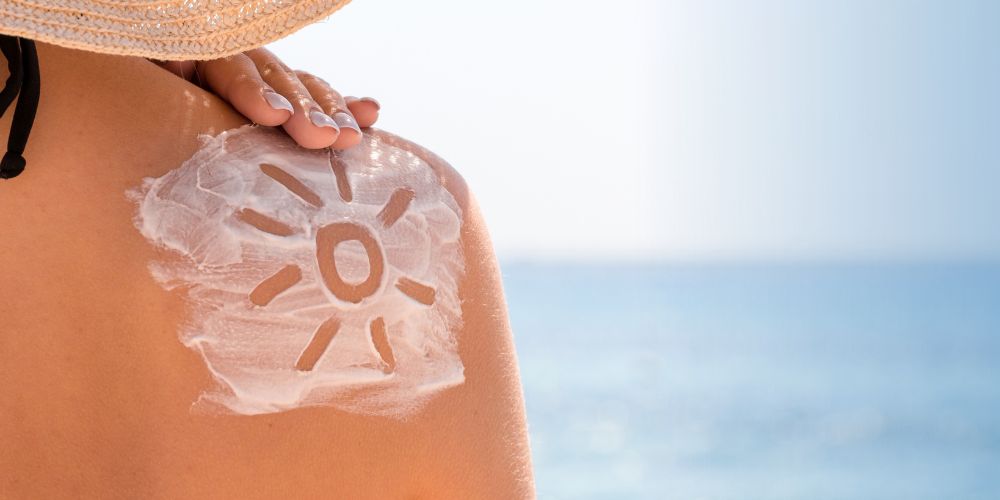SPF Explained: Find the Best Sunscreen for Your Skin Type

Sun protection is essential all year round. But with so many sunscreens and SPF numbers, it can be confusing to choose the right one. This guide will explain what SPF is, how it works, and how to pick the best sunscreen for your skin.
What Is SPF and What Does SPF Stand For?
SPF stands for Sun Protection Factor. It tells you how well a sunscreen protects your skin from UVB rays — the rays that cause sunburn and contribute to skin damage.
If you usually burn after 10 minutes in the sun, applying SPF 30 sunscreen means you could stay out 30 times longer (about 300 minutes) without burning. Keep in mind, factors like sweating and swimming can reduce this time.
Beat FOMO by being in the know!
Higher SPF also means more protection, but not by much. SPF 30 blocks 97% of UVB rays, while SPF 50 blocks 98%.
No sunscreen can block 100% of UV rays.
Types of SPF Sunscreens: What Is in Them?
Sunscreens protect your skin by using active ingredients designed to block or absorb harmful ultraviolet (UV) rays from the sun. These ingredients fall into two main categories: chemical and physical (also called mineral) filters. Each works differently to shield your skin from damage.
Chemical Sunscreens: Absorbing UV Rays
Chemical sunscreens contain organic (carbon-based) compounds that absorb UV radiation and convert it into a small amount of heat, which is then released from the skin. This prevents the UV rays from penetrating your skin and causing harm.
Key features of chemical sunscreens:
- Typically require about 15 to 20 minutes after application to become effective.
- Often have a lightweight, invisible finish that feels smooth on the skin.
- Can be formulated to target specific UV ranges (UVA and/or UVB) for tailored protection.
- May be more prone to causing irritation or allergic reactions, especially on sensitive skin.
Common chemical sunscreen ingredients include:
- Avobenzone: Effective against UVA rays, which penetrate deeper into the skin and contribute to aging and skin cancer.
- Oxybenzone: Absorbs both UVA and UVB rays but has raised some concerns about skin sensitivity and environmental impact.
- Octinoxate: Primarily protects against UVB rays and is widely used in many sunscreen formulas.
- Homosalate, Octocrylene, and Mexoryl: Other common UV filters that work in combination to provide broad-spectrum protection.
Physical (Mineral) Sunscreens: Reflecting and Scattering UV Rays
Physical sunscreens contain mineral-based ingredients like zinc oxide and titanium dioxide. These act as tiny particles on the skin’s surface that reflect, scatter, and block UV rays before they can penetrate your skin.
Key features of physical sunscreens:
- Provide broad-spectrum protection against both UVA and UVB rays.
- Start protecting immediately upon application (no wait time needed).
- Tend to be gentler and less likely to irritate sensitive or acne-prone skin.
- Often leave a slight white or tinted cast on the skin, though newer formulations are more transparent.
Physical sunscreens are ideal for people with sensitive skin, children, and those who prefer mineral-based, “cleaner” skincare options.
Which One Is Better?
Both chemical and physical sunscreens are effective when used correctly. The best choice depends on your skin type, preferences, and activity:
- If you want a lightweight, invisible finish, chemical sunscreens might suit you best.
- If you have sensitive skin, prefer “cleaner” skincare options, or want immediate protection, physical sunscreens are a great choice.
Some sunscreens combine both types of ingredients to offer enhanced protection and a pleasant feel.
How Long Does SPF Last?
Understanding how long your sunscreen protects you is key to staying safe in the sun. While SPF tells you how much protection a product offers, it doesn’t mean that protection lasts all day.
- Sweating: When you sweat, especially during exercise or hot weather, sunscreen can start to wear off. Sweat can cause the protective layer to thin or drip away, reducing its ability to block UV rays.
- Swimming: Water exposure, whether swimming or splashing, can wash away sunscreen unless it’s labeled water-resistant. Even water-resistant sunscreens need to be reapplied after about 40 to 80 minutes in the water.
- Rubbing or wiping your skin: Activities like towel drying, wiping sweat from your face, or simply touching your skin can physically remove sunscreen. This lowers its protective barrier and increases your risk of sunburn.
The Two-Hour Rule: When to Reapply
Most experts recommend reapplying sunscreen every two hours when you’re outdoors. This rule applies even if you’re not sweating or swimming, as the sunscreen’s effectiveness naturally diminishes over time due to factors like sun exposure and skin oils.
If you’re swimming, sweating heavily, or towel-drying, reapply sunscreen immediately afterward to maintain full protection.
RELATED: 1 in 5 Millennials and Gen Xers Didn’t Wear Sunscreen As Teens
Does Sunscreen Expire?
Yes, sunscreen does expire and loses effectiveness over time. Most have an expiration date printed on the bottle, usually about 3 years after manufacture. For squeeze tube sunscreen, the expiration date is usually pressed into the crimped area at the end of the plastic tube.
Expired sunscreen may not protect you properly, so replace it if it’s old or the texture or smell changes.
Can You Tan with Sunscreen?
Many people wonder, does SPF prevent tanning?
The answer: not completely.
Sunscreen protects you from sunburn, cancer and skin damage but does not stop your skin from producing melanin — the pigment that causes tanning.
What does it do? It lets you get a safer, gradual tan by filtering harmful UV rays.
What SPF Sunscreen Should You Use?
Choosing the right SPF sunscreen isn’t one-size-fits-all. It depends on several factors, including your skin type, the intensity of sun exposure, and the activities you plan to do outdoors.
Consider Your Skin Type
Fair or sensitive skin: If you burn easily or have very fair skin, higher SPF values like SPF 50 or above are usually recommended. This level offers extra protection against UV damage and reduces the risk of sunburn.
Medium to darker skin tones: While darker skin has more natural protection, it’s still important to use sunscreen to prevent sun damage and premature aging. SPF 30 is often sufficient for daily use, but you might want to go higher if you spend extended time outdoors.
Duration and Intensity of Sun Exposure
Everyday activities: For regular day-to-day activities such as commuting, running errands, or brief outdoor exposure, a broad-spectrum SPF 30 sunscreen is generally recommended. This provides effective protection without feeling heavy or greasy.
Extended time outside: If you’re spending several hours outdoors—whether at the beach, hiking, or playing sports—opt for SPF 50 or higher. Higher SPF offers greater protection against UVB rays and helps prevent sunburn during prolonged exposure.
Other Factors to Keep in Mind
Water and sweat resistance: If you’re swimming or sweating, choose a sunscreen labeled water-resistant to ensure it stays effective longer. Remember to reapply every two hours, or immediately after swimming or heavy sweating.
Sensitive skin or allergies: Some people may react to certain sunscreen ingredients. If you have sensitive skin, look for formulas labeled hypoallergenic, fragrance-free, or mineral-based physical sunscreens with zinc oxide or titanium dioxide.
Expert Recommendations
Most dermatologists agree that using at least SPF 30 sunscreen daily is key to preventing skin damage, even on cloudy days. Higher SPF values provide increased protection, but no sunscreen can block 100% of UV rays, so combining sunscreen with protective clothing and shade is always best.
Best Sunscreen for Your Face: What to Look For
The skin on your face is thinner and more sensitive than the rest of your body. Dermatologists recommend using a broad-spectrum sunscreen with at least SPF 30 for daily face protection.
Look for formulas that say:
- Non-comedogenic (won’t clog pores)
- Lightweight and fast-absorbing
- Often combined with moisturizer for easy daily wear
Physical (mineral) sunscreens with zinc oxide or titanium dioxide are gentle and great for sensitive skin.
Remember, no sunscreen lasts all day. Reapplication is key to staying protected.
Safe Sunbathing Practices
- Apply sunscreen generously — about one shot glass for your entire body.
- Reapply every two hours, or after swimming or sweating.
- Avoid sun exposure between 10 AM and 4 PM — when UV rays are strongest.
- Cover often missed spots like ears, lips, neck, and feet.
- Wear hats, sunglasses, and protective clothing whenever possible.
Understanding what SPF sunscreen is and choosing the right sunscreen helps protect your skin so you can enjoy the sun safely.
Beat FOMO by being in the know!
Sign up for our newsletter today and never miss a beat.





